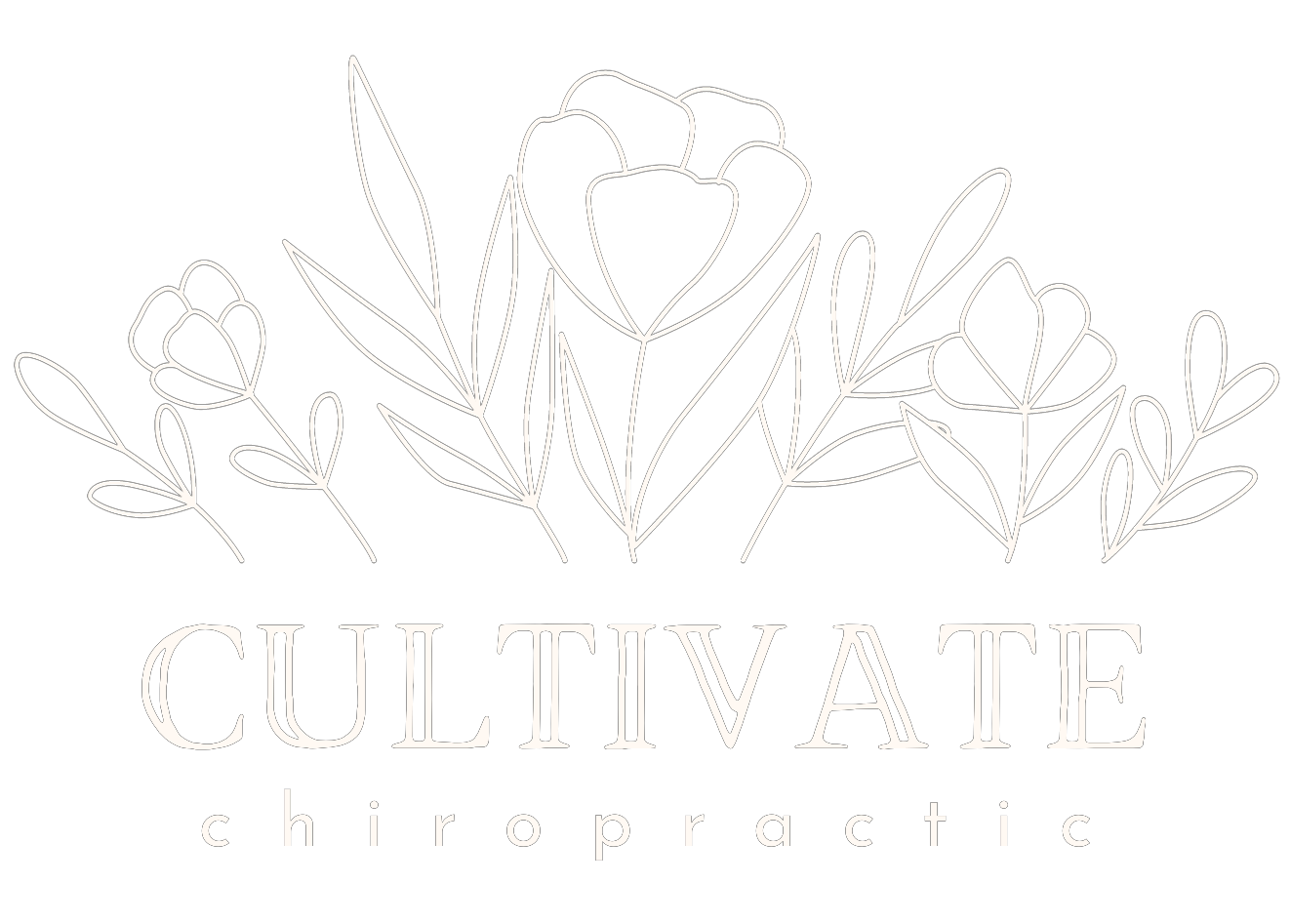Chiropractic & Stress: What Your Tension Is Telling You
Understanding the Mind-Body Connection + Natural Ways to De-Stress
Let’s be honest: stress is practically a constant in our modern lives. From busy schedules and work demands to emotional strain and even the endless pings of notifications—it’s no wonder our bodies feel like they’re in a pressure cooker. But what if the tightness in your shoulders or the constant ache in your lower back isn’t just a symptom of “getting older” or “sleeping wrong”?
What if it’s your body sending you a clear message: “Hey, I need a little help here.”
At Cultivate Chiropractic, we believe your body has an incredible ability to communicate. It just doesn’t always speak in words—it speaks through tension, posture, energy levels, and how well your systems function. And often, that communication is rooted in one major player: your nervous system.
The Stress-Tension Loop: What Happens in Your Body
Stress isn’t just a mental state—it’s a full-body experience. When your brain perceives a threat (even if that “threat” is just traffic or an overflowing to-do list), it triggers your sympathetic nervous system, also known as your “fight or flight” mode.
Here’s what happens:
Muscles tighten as your body prepares to “act.”
Heart rate and blood pressure increase.
Breathing becomes shallow.
Digestion slows down.
Your body prioritizes survival over balance.
When stress is chronic—and in today’s world, it often is—your body gets stuck in this heightened state. The result?
Persistent muscle tension. Headaches. Poor sleep. Digestive issues. Fatigue. Irritability. Postural changes.
And unfortunately, this creates a feedback loop: the more physical tension you carry, the more stressed you feel. The more stressed you feel, the more your body tightens up. It’s a vicious cycle—but the good news is, it’s one you can break.
How Chiropractic Care Interrupts the Cycle
Chiropractic isn’t just about pain relief (though that’s a nice benefit). It’s about optimizing the function of your nervous system—the master control system of your entire body.
When your spine is misaligned (what chiropractors call a subluxation), it can create pressure or interference in your nerves. This interference disrupts communication between your brain and body, contributing to that feeling of being “on edge” or out of sync.
Through gentle, precise adjustments, chiropractic helps to:
Release stored tension in the muscles and joints
Even a small misalignment can cause surrounding muscles to overcompensate. Adjustments help bring the body back into balance, allowing those muscles to relax.Activate the parasympathetic nervous system
This is your “rest and digest” mode—where healing, digestion, sleep, and restoration happen.Improve posture and alignment
When stress leads to slouched shoulders, tech neck, or tight hips, regular adjustments help correct those patterns before they become chronic.Enhance resilience
A nervous system that’s functioning at its best helps you better adapt to daily stressors, instead of being overwhelmed by them.
Listening to the Signals: Is Your Body Asking for Help?
Your tension isn’t random. Pay attention to patterns like:
Jaw clenching or grinding teeth at night
Stiffness or pain between the shoulder blades
Chronic headaches or migraines
Tight lower back after sitting
Shallow breathing or chest tightness
Poor sleep or waking up feeling unrested
These are all signs that your nervous system may be under strain—and that your body could benefit from chiropractic support.
Everyday Strategies to Support Mind-Body Wellness
While chiropractic care is a powerful tool for managing stress, it works best as part of a holistic, intentional lifestyle. Here are some simple, natural ways to help your body feel more grounded and at ease:
🌿 1. Start Your Day with Breathwork
Before you reach for your phone, try 2–3 minutes of slow, deep breathing. Inhale for a count of 4, hold for 4, exhale for 6. This calms your nervous system and sets a peaceful tone for the day.
💧 2. Hydrate Consistently
Dehydration increases cortisol (your stress hormone) levels. Sip water throughout the day, and add a pinch of sea salt or a splash of lemon for extra minerals.
🧘 3. Stretch or Move Every Hour
Micro-movements matter. Set a timer and stand, stretch, or walk every 60–90 minutes to prevent physical stagnation that can compound tension.
📵 4. Create Boundaries with Technology
Your brain wasn’t built for constant alerts. Try putting your phone in “Do Not Disturb” mode during meals or for the last hour before bed to help your nervous system downshift.
🌞 5. Get Outside When You Can
Natural sunlight and fresh air help regulate your circadian rhythm and lower cortisol. Even a 10-minute walk can help you reset.
🧠 6. Prioritize Restorative Sleep
Sleep is when your body repairs from stress. Create a wind-down routine with stretching, magnesium, or herbal tea. And yes—adjustments can help you sleep better too.
Let’s Cultivate Calm—Together
The truth is, stress may always be a part of life—but how your body handles it can change. You’re not meant to just push through or numb the discomfort. You’re meant to listen, respond, and care for your nervous system in a way that promotes lasting health and inner peace.
At Cultivate Chiropractic, we’re here to walk with you on that path—to help you listen to what your body is saying and to create a space where healing becomes your new baseline.
Your tension is telling you something. Are you ready to listen?
Let’s help your body move from stressed and stuck to calm and connected.

